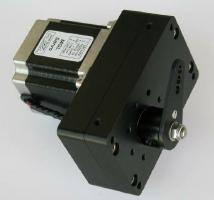| MGL Avionics servo (MGL
servo details) |
Trio Avionics Gold standard servo (www.trioavionics.com) |
 |
 |
| Stepper motor based, single stage spur
gear |
DC motor based, mutiple stage spur gear |
| No clutch, minor residual torque if not
engaged |
Electric clutch, no residual torque if not
engaged |
| CAN and RS232 interface |
Psuedo RS232 interface |
| Can be used with Odyssey, Voyager, Enigma,
XTreme |
Can be used with Odyssey, Voyager,
Enigma |
| May need COM Extender module for Enigma if
serial port used for other purpose |
Needs COM Extender module in all cases |
| Output shaft can operate over any range and
angles |
Output shaft operates over fixed range and
anges
(arm can be positioned in 90 degree
steps) |
| Safety override: Shear screw |
Safety override: Internal, sacrificial
gear |
| Electronically adjustable output torque |
Output torque adjustable mechanically
(requires opening of servo) |
| Direct motor overdrive |
Slipper clutch on output shaft |
| Two moving parts (motor shaft, output
shaft) |
Many moving parts |
| Contactless position sensing |
Position sensing using potentiometer |
| Capable of measuring actual force acting on
output shaft (trim sensing) |
No internal trim sensing |
| Heavier than Trio servo (1.38Kg) |
Lighter than MGL servo (0.8Kg) |
| Electrical interface connection: D9
connector |
Electrical interface connection: Flyleads to
automotive connector |
| Higher cost compared to the Trio servo |
Lower cost than the MGL Servo |
| Operates from 12V and 24V (28V) systems |
12V systems, requires pre-regulator for 24V
systems |
| Current requirement approximately 1A average
(engaged), 0.6A at 24V |
Current requirement approximately 1A average
(engaged) |

